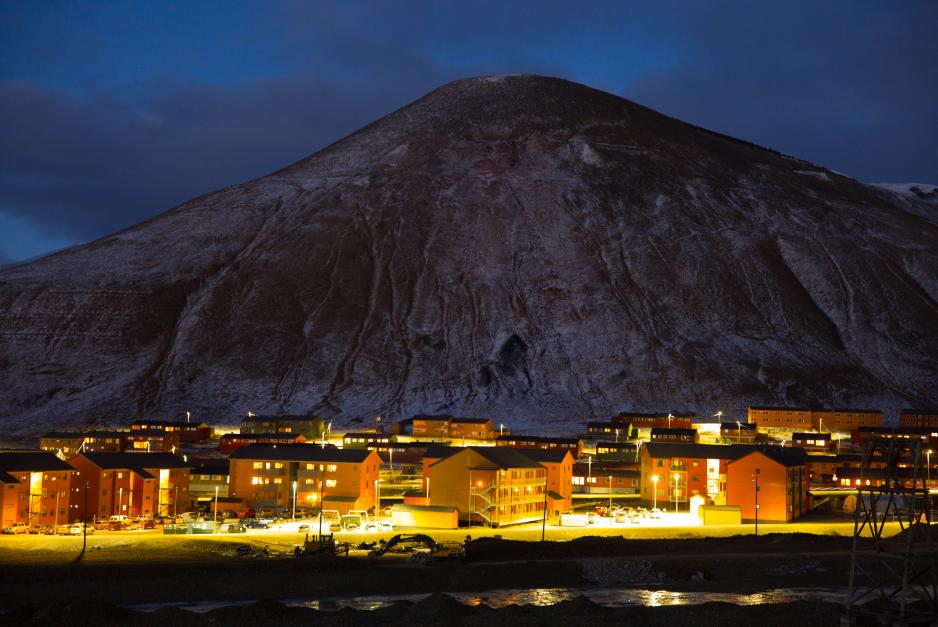Russia Has Always Challenged Norway on Svalbard. This Time, Parts of Its Criticism is Different

Longyearbyen, Svalbard, photographed September 2018. Photo: Brett Davis
Russia once again objects to non-preferential treatment on Svalbard. This time, however, its criticism has changed character. Norway’s reactions to an EU-sanctioned Russian Deputy Prime Minister in Longyearbyen in 2015 may have given Moscow new arguments against Norwegian Svalbard policy, experts argue.
Why is Moscow objecting to the “expulsion procedure adopted solely for Russian citizens on Svalbard”, as coined by Russia’s Foreign Minister Sergey Lavrov in a very explicit letter to Norwegian Foreign Minister Ine Eriksen Søreide last week?
Many will probably remember the then-Russian Deputy Prime Minister Dmitry Rogozin’s remarkable visit to Svalbard in April 2015. Rogozin was on the EU’s sanctions list for his involvement with the illegal Russian annexation of Crimea, a Ukrainian peninsula, the year before and he was thus denied entry to both the EU as well as the Schengen area. Yet Norwegian authorities could not refuse him to land on Svalbard. Schengen entry rules apply to Norway; however, while Svalbard is part of the Kingdom of Norway, the Svalbard Treaty grants all signatory states equal rights to “access and stay – without regard to reason or purpose”.
Rogozin was heading for the North Pole and used his stopover on Svalbard to both be photographed in Longyearbyen and to visit the Russian mining community in Barentsburg. Rogozin is famous for his direct style, both in diplomatic contexts as well as on Twitter. And the images of the Deputy Prime Minister on Svalbard, the man who was then in charge a.o. of the Russian weapons industry, soon took off in social media.
Just as fast as Rogozin disappeared from the archipelago, Norwegian authorities sat down and hammered out new regulations for entry to Svalbard. At the Ministry of Foreign Affairs in Oslo, Rogozin’s Svalbard visit was regarded as a provocation and the Russian Ambassador to Norway was summoned.
In the regulation about “expulsion of persons from Svalbard”, which entered into force in September 2016, it now says that the Svalbard Governor should expel persons who are covered by international restrictive measures that “contain travel restrictions to which Norway has agreed and that are applied to other parts of the Kingdom of Norway”.
What will this mean to the relationship between Norway and Russia on Svalbard during the coming years? High North News has spoken with several analysts and experts who argue that the changing of the regulation was in effect to play the ball right into the hands of Svalbard critics in Moscow.
And there are many of those.
A 100th anniversary
When the letter from Russian Foreign Minister Sergey Lavrov to his Norwegian counterpart Ine Eriksen Søreide about the Svalbard Treaty’s 100th anniversary became known this week, it drew some attention.
Not because the criticism it contained is new in and of itself. But rather; the stern format and the fact that it appeared in public simultaneously are news, several people who are closely familiar with Norwegian Svalbard policy inform High North News.
The timing was, of course, not random at all. Sunday marked the 100th anniversary of the signing of the Svalbard Treaty in Paris. Five years later, it entered int oforce.
The Soviet Union’s, and later Russia’s, view on how the country feels discriminated on Svalbard is old news, whether one talks about the fisheries protection zone, the creation of protected nature areas or limitations to helicopter traffic. These issues are also raised with Norwegian authorities in bilateral meetings on several levels on a regular basis.
What is new in Russian criticism this time around, however, is the reference to the “Rogozin case”, says Arild Moe, Senior Researcher at the Fridtjof Nansen Institute. He has monitored Norwegian-Russian Svalbard policy for years.
“It is clear that Lavrov here is referring to the Rogozin regulation. Norway now has legal foundations for expelling persons who are subject to sanctions to which Norway has agreed. Lavrov’s phrasing is ambiguous, however, this is clearly the matter”, Moe says.
Is this a case that is now smoldering below the surface of the Norwegian-Russian relationship on Svalbard?
“This is a case that will not come to a peak before the regulation is applied onto a real case. However, if a new Russian politician or public servant who is on the sanctions list were to appear and Norwegian authorities use force to expel that person from Svalbard, there will be trouble. One can say that with clarity”, says Moe.
The Svalbard Governor, the Norwegian government’s highest representative on the archipelago and the only office holding police authority, says to High North News that no Russian citizens have been expelled from Svalbard during the past 20 years.
On average, one to two person are expelled from the archipelago each year. These are people who do not have a house, job or money to manage on Svalbard, says the Governor.
Moe argues that Russian Svalbard policy is consistent after all, and that the country most likely does not want an open conflict.
“Russia is out to make clear that the country holds a special interest and wants special arrangements. This is implied in Lavrov’s letter. However, it is not a given that the country wants an open conflict about Svalbard, even though that is a question one cannot answer with 100 percent certainty. Yes, they want to put pressure on Norway, however, they do not want an open conflict situation”, Moe says.
“Norway does not negotiate about Norway”
The most concrete item of Lavrov’s letter is the request for bilateral conversations. However, Arild Moe does not believe the Norwegian foreign minister will hop on a plane to Moscow to discuss Svalbard issues with Lavrov.
“Norway will respond politely and express gratitude for good cooperation on Svalbard, where the countries have good relations. Then, Norway will say that Russia can raise any Svalbard issues with the relevant Norwegian professional authorities through the Svalbard Governor. Norway will not enter into bilateral consultations about Svalbard with Russia. Norway’s starting point is that Svalbard is Norway, and one does not negotiate about Norway with other states, Moe says.
Was Norway wise to introduce the new regulation in 2016?
“That is a matter of discussion. Rogozin’s visit was perceived by Norwegian authorities as a provocative action. In addition, the Russians created a lot of PR and show around it. Norway then felt it had to put its foot down and say that this was not wanted. However, Rogozin’s visit to Svalbard was not a violation of the regulations in place then, but rather a violation of Norwegian policy. There were no legal foundations for stopping it. That is why the new regulation was introduced”, Moe says.
Julie Wilhelmsen, researcher and Russia expert at the Norwegian Institute of International Affairs (NUPI), argues that the statements from the Russian MFA are not very serious in and of themselves. Svalbard is a frequently raised issue in normal diplomatic relations between Norway and Russia on several levels, she says.
“Russia often raises its dissatisfaction with how Russian rights on Svalbard are not taken into consideration in the interpretation of the Treaty. The fact that they now do this officially and from a top level, is perhaps some sort of tactic to put pressure on Norway. It will be impossible for Norway to say ‘we have noted your dissatisfaction with this’. Russia is probably hoping to gain some ground for its demands when raising this issue so vocally”, Wilhelmsen says.
Norway’s starting point is that Svalbard is Norway, and one does not negotiate about Norway with other states

Julie Wilhelmsen, researcher at the Norwegian Institute of International Affairs (NUPI). Photo: Amund Trellevik
Researchers at NUPI have gone through and reviewed all official Russian statements from before the Ukraine crisis and up until 2018. They have not found much about Rogozin’s visit to Svalbard, nor about the Norwegian reactions to it.
“Thus, it is hard to know how Russia views that case”, Wilhelmsen says.
The findings show that the presentation of Norway is dramatically changing in the years after 2014. Before the Ukraine crisis, there was an overall positive image of Norway, combined with an expressed fear that NATO and the USA should pull Norway into a militarization of the Arctic, Wilhelmsen says.
“After 2014, and as the scandal around the Russian involvement with the American presidential election widens, the image of Norway as a ‘sole actor’ disappears into a larger image of the West having an anti-Russian campaign going on.”
Should Norway take a statement like this seriously?
“Yes, I think so. However, the problem with taking this seriously is that many will perceive it as giving in to Russian pressure. Nevertheless, there appears to be quite an understanding in many places for the Russian worries about NATO’s intentions, for Russia worrying about a bigger American footprint closer to their borders”, says Wilhelmsen.
“Expected phrases from a great power”
The letter from Lavrov says that Russia now requests a meeting with Norway to discuss Svalbard problems. Wilhelmsen believes Norway will enter into these talks as one would in other bilateral meetings with Russia.
“Norway has an established diplomatic practice with requests like this. I believe the MFA will go to this conversation with Russia, about Svalbard. One has to keep in mind that Svalbard is frequently mentioned when Norway meets Russia for conversations on various levels”, Wilhelmsen says. She does not think the phrasing of the letter is particularly remarkable.
“This phrasing is to be expected from a big power like Russia. Russia is assertive. The country feels that it has some legitimate demands based on the wording of the Treaty and that Russia’s interest is not taken into regard. That makes Russia assert itself”, Wilhelmsen says.
Stian Bones, Professor of History at the University of Tromsø, interprets Lavrov’s letter to Norway as an assertion of Russia’s having long-term and strategic interests to maintain in the area.
“The message is that Russia is paying attention to Norwegian exercising of authority and international Svalbard policy. Lavrov uses phrases like Russia and Norway having had activities in Svalbard for a long time. They want to express that there are specific issues to raise, and also take the opportunity to say that Russia has plans for business activities on the archipelago”, Bones says.
This article was originally published in Norwegian and has been translated by HNN's Elisabeth Bergquist.

